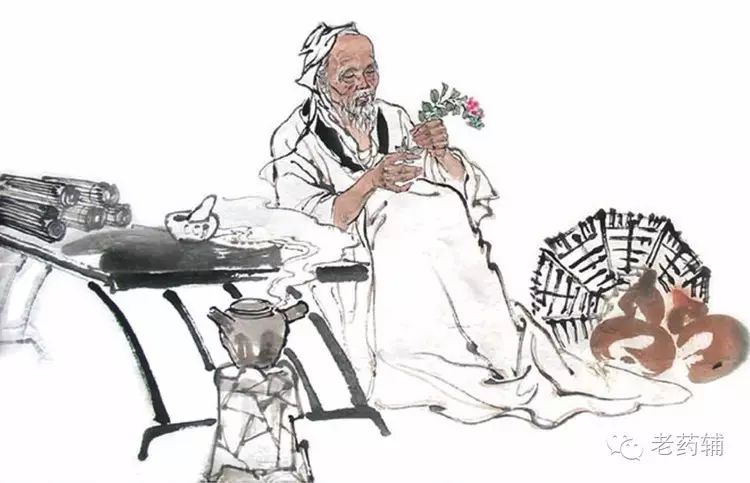In ancient times, before Western medicine was introduced to China, Traditional Chinese Medicine (TCM) was not referred to by this name. It was only after the advent of Western medicine that we began to call it TCM. So, what were the names used for doctors practicing TCM in ancient times? Let’s explore this together! 1. Qi Huang
1. Qi Huang
The first name for TCM is “Qi Huang”. This name comes from the Huangdi Neijing (Yellow Emperor’s Inner Canon), and its authors, the Yellow Emperor and Qi Bo, are revered as the ancestors of medicine. For this reason, later generations came to use “Qi Huang” as a synonym for TCM. Thus, the medical practices described in the Huangdi Neijing became known as the art of Qi Huang. Since the Huangdi Neijing is the earliest medical classic in China, “Qi Huang” became synonymous with TCM.
2. Qing Nang
The second name for TCM is “Qing Nang”. This name is rarely known or used today, and it is associated with the famous physician Hua Tuo from the Three Kingdoms period. It is said that before Hua Tuo was executed, he filled a green bag with his medical books as a token of gratitude to a jailer who had treated him well. After Hua Tuo’s death, the jailer also practiced medicine, allowing some of Hua Tuo’s medical techniques to be passed down. Hence, later generations referred to TCM as Qing Nang.
3. Xing Lin
The third name for TCM is “Xing Lin”. During the Three Kingdoms period, there was a famous physician named Dong Feng who lived in Lushan, Jiangxi. He never charged for his medical services, only asking those he healed to plant apricot trees behind his house. Due to his renowned medical skills, people from nearby came to seek his help. In a few years, the area behind his house transformed into a vast apricot forest. Based on the legend of Dong Feng, people began to use “Xing Lin” to praise doctors, and physicians often referred to themselves as “people of the apricot forest”. Later generations used phrases like “Xing Lin Chun Nuan” (Spring Warmth in the Apricot Forest) and “Yu Man Xing Lin” (Reputation Spreads Throughout the Apricot Forest) to commend the noble qualities and excellent medical skills of physicians. Thus, TCM began to be referred to as “Xing Lin”.
4. Xuan Hu
The fourth name for TCM is “Xuan Hu”. According to legend, there was a potter (around the 2nd century AD) whose name is unknown, but he possessed medical skills and sold medicine in the market at a fixed price, curing all ailments. Because he often hung a pot as a medical banner at his place of diagnosis and medicine, he was called the potter. Consequently, later generations referred to those who sold medicine and practiced medicine as “Xuan Hu”, and the profession of doctor was beautifully termed “Xuan Hu Ji Shi” (Hanging the Pot to Save the World). Throughout history, physicians have celebrated their practice with phrases like “Xuan Hu Zhi Xi” (Joy of Hanging the Pot). 5. Ju Jing
5. Ju Jing
The fifth name for TCM is “Ju Jing”. It is said that during the Western Han Dynasty, the Taoist Su Dan, in his filial piety towards his mother, told her before becoming an immortal that there would be an epidemic, and that soaking orange leaves in well water could cure diseases. The situation later proved to be as Su Dan had predicted; during the epidemic, people traveled from afar to seek well water and orange leaves, and those who drank the well water with orange leaves were immediately cured. His mother used this method to treat countless patients, leading to the saying “Ju Jing Quan Xiang” (The Fragrance of Ju Jing Spring) in medical history, and the term “Ju Jing” gradually deepened to become synonymous with TCM.
6. Da Fu
The sixth name for TCM is “Da Fu”. In ancient feudal states, there were three ranks below the monarch: the minister, the doctor, and the scholar, thus making it a general term for officials. After the Qin and Han dynasties, there were high-ranking officials such as the Grand Inspector and various advisory positions like the Advising Doctor and the Grand Doctor. During the Tang and Song dynasties, there were still positions like the Grand Inspector and the Advising Doctor. During the reign of Emperor Huizong of Song, when the official ranks were restructured, a separate rank of “Da Fu” was established among medical officials, with the chief physician specifically referred to as “Da Fu”. Additionally, after the late Tang and Five Dynasties, the proliferation of official titles led to a social trend of referring to doctors as “Da Fu”. To distinguish it from the official title, the pronunciation of “Da” in “Da Fu” was changed to dài instead of dà, which is why we still refer to doctors as “Da Fu” today. 7. Lang Zhong
7. Lang Zhong
The seventh name for TCM is “Lang Zhong”. Why were doctors called “Lang Zhong” in ancient times? In any culture’s primitive era, medicine and shamanism were often intertwined, making it difficult to distinguish between what was medicine and what was shamanism; both were referred to as “Wu Yi” (Shamanic Medicine). Historical records indicate that during the Tang Dynasty, the status of shamans was very low, but some court physicians who treated the royal family received special rewards from the emperor. To show respect, people referred to these medically skilled shamans as “Lang Zhong” or “Da Fu”. By the Song Dynasty, “Lang Zhong” or “Da Fu” had replaced shamans as the professional title. Interestingly, there is a phenomenon where people north of the Yellow River mostly refer to doctors as “Da Fu”, while those south of the Yellow River often call them “Lang Zhong”.
These are the various historical names for “Traditional Chinese Medicine”.

